In the past, people adapted to a building. This century, green buildings have been popping up in Australian CBDs, both architecturally amazing and making inhabitants healthier and happier.
“Green buildings help the occupants stay mentally healthy, through psychological restoration via vegetation and being close to nature,” says Urban Ecology and Urban Horticulture Professor Nick Williams from The University of Melbourne. “This may also help people return to the office after COVID-19.”
These award-winning green buildings all reduce energy consumption, maximise air and light quality, and increase the greenery in some of our most densely populated areas. Not only that, they’ve proven to have a positive impact on the inhabitants’ mental health.
1. CH2, Melbourne
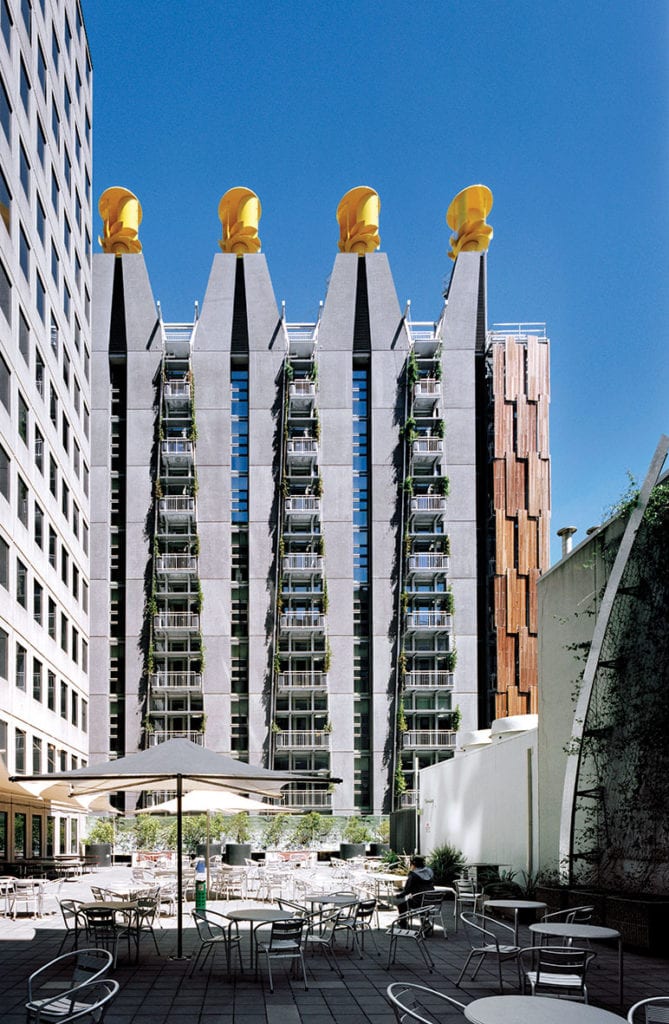
“My pick in Australia would be the CH2 Building in the City of Melbourne,” says Associate Professor John Rayner, Director of Urban Horticulture at The University of Melbourne.
“The building has multiple features that reduce energy and resource consumption, including water. It has low emissions, well-designed interiors to maximise natural light and social interactions and is covered in green roofs and walls.”
Melbourne City Council opened its CH2 offices in 2005, achieving Australia’s first Six Star Green Star rating. By responding to the sun and wind, CH2 makes one of the world’s healthiest commercial indoor workplaces. The design allowed to reduce power consumption by 80 per cent and water consumption by 75 per cent.
Air intake is 100 per cent filtered outside air, not recycled. From the roof garden to indoors, plants are at a ratio of one per person. So, Melbourne council staff breathe the cleanest air possible.
2. Ingkarni Wardli Building, Adelaide
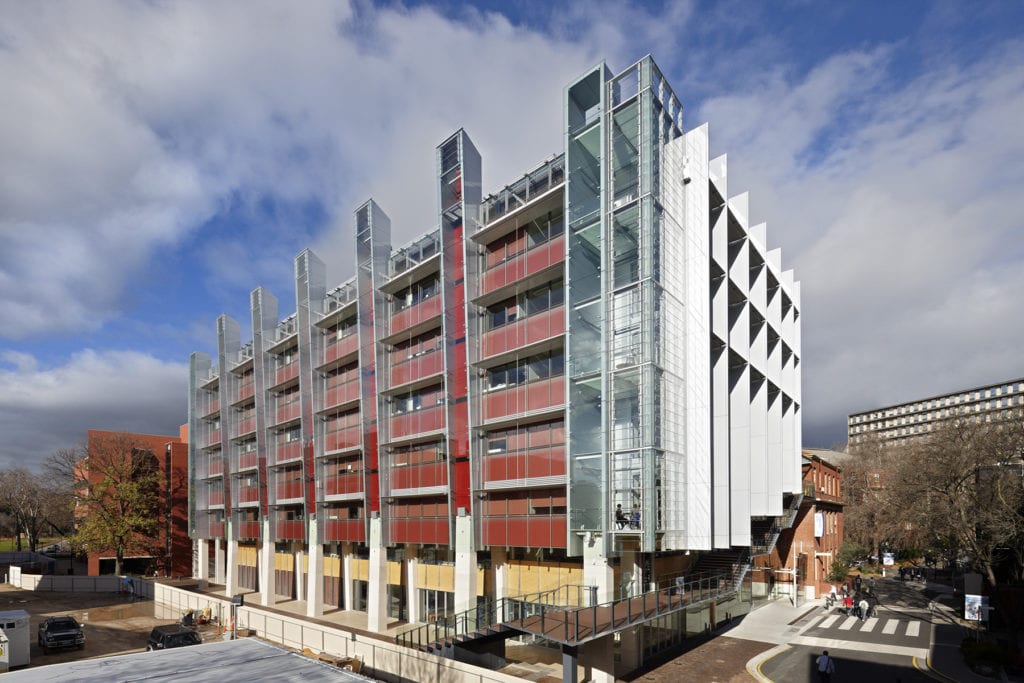
The students of the Ingkarni Wardii building are literally learning from their surrounding environment. Inkarni Wardii is a purpose-built education facility for the Faculty of Engineering, Computer and Mathematical Sciences at the University of Adelaide.
Sun-shading louvres and thermal chimneys regulate the internal temperature.
The rooftop tri-generation plant powers the building and rainwater harvesting into 500,000-litre underground tanks. The water is then used for both toilets and irrigation.
All data is monitored and available for students as a sustainable design teaching tool.
3. One Central Park, Sydney
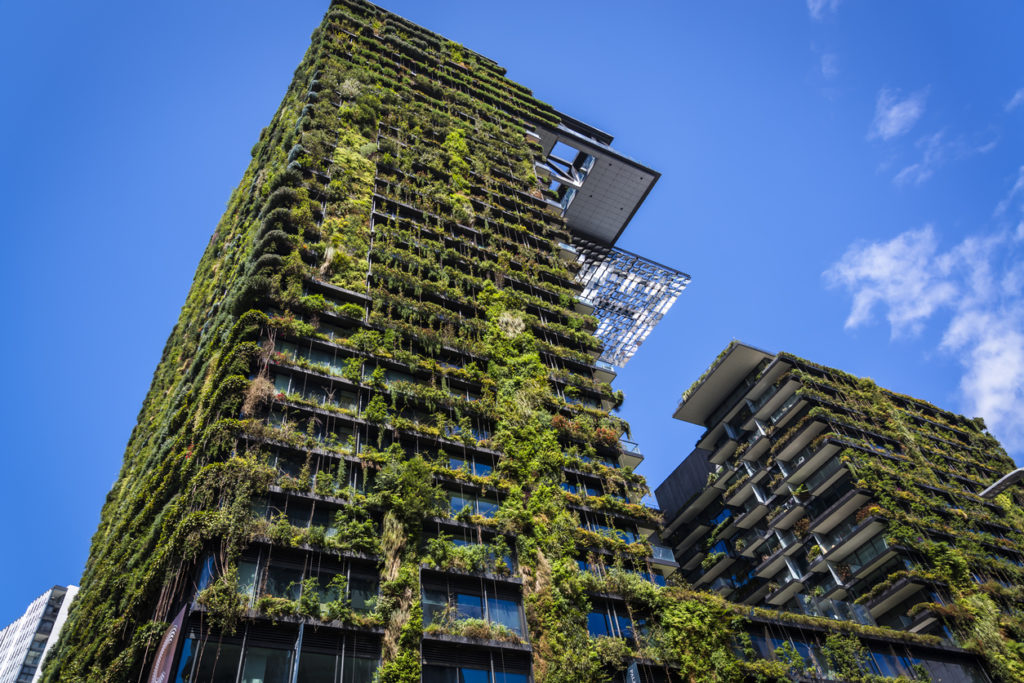
Sydneysiders are quite fond of living in a free-standing house. The downside being a large suburban sprawl. In response to this, One Central Park was developed at Chippingdale, near Central Station. The Five Green Star-rated building comprises an east and west residential apartment tower, with six levels of retail shopping located at the base of the two towers. The 34 levels house 623 apartments in addition to 625 car parking spaces.
Built on the 1830’s Carlton and United Brewery site, the stacks now form part of a sustainable energy-emitting power plant for Central Park’s residents.
Lush hydroponic plants grow on the building’s façade, watered by the site’s blackwater recycling infrastructure.
Dramatic heliostats are programmed to direct sunlight and heat to where it’s needed at any time of the day, including the residential swimming pool.
4. Burwood Brickworks, Melbourne
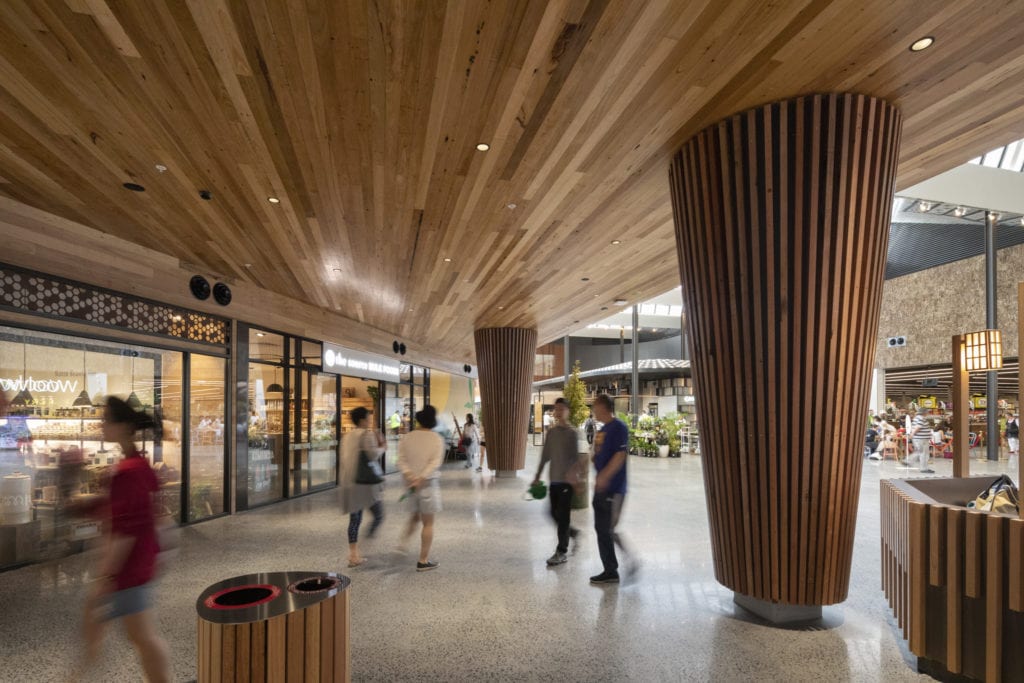
Burwood Brickworks is an example of where shopping can be good for your health. After picking up a bottle of plonk from Dan Murphies and milk from Woolies, a visit to the rooftop farm will recharge your batteries.
This shopping complex produces more energy than it consumes. The centre also captures and re-uses all the water it needs. This includes water for the 2,500 sqm of rooftop agriculture, 247 citrus trees that line the northern façade, and extensive internal greenery.
5. Barangaroo South, Sydney
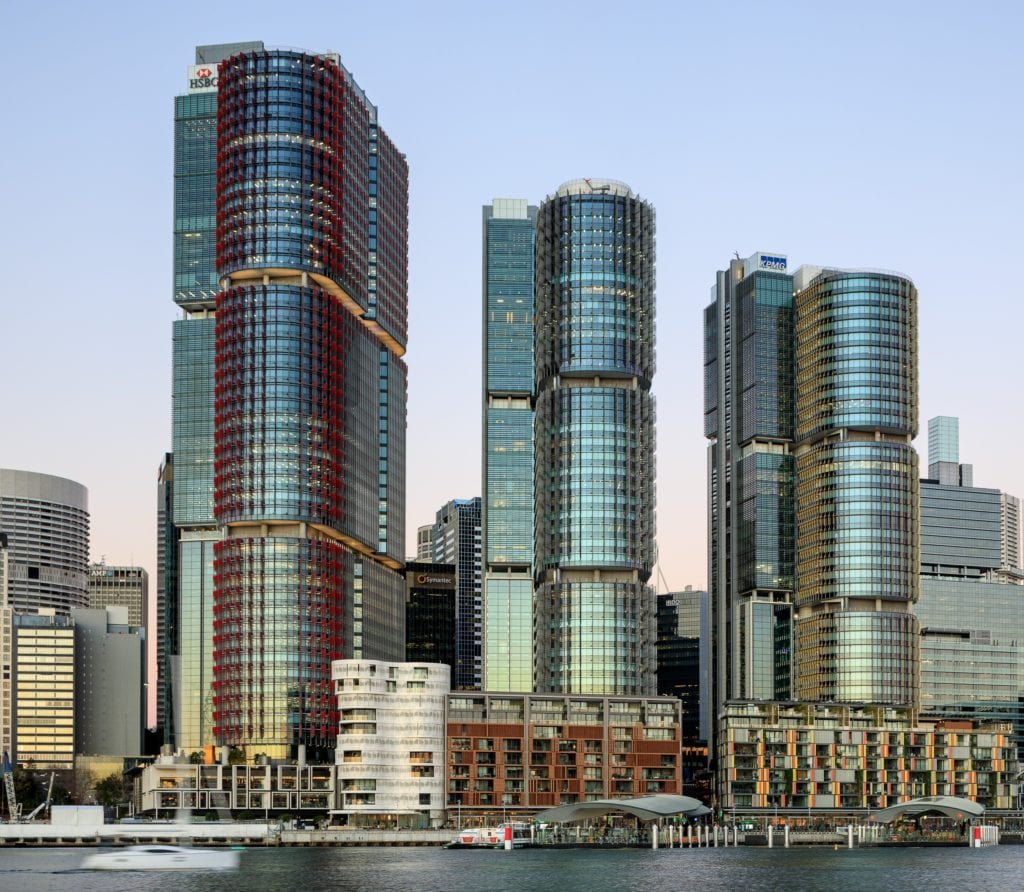
Barangaroo South is not only water positive but Australia’s first carbon-neutral community.
Opened in 2019, it houses 1,800 residents and 23,000 office workers. And yet, it still managed to free up more than 50 per cent of the area as public space. The stunning Sydney foreshore is fully accessible to walkers, runners and cyclists, and it is expected to attract about 18 million visits per year.
Barangaroo South is currently the most sustainable office building in Australia. Energy used by the recycled water treatment plant and public domain lighting is offset by 6,000 sqm of solar PV panels. The water is recycled on site and used for toilet flushing and irrigation.
6. International House, Sydney
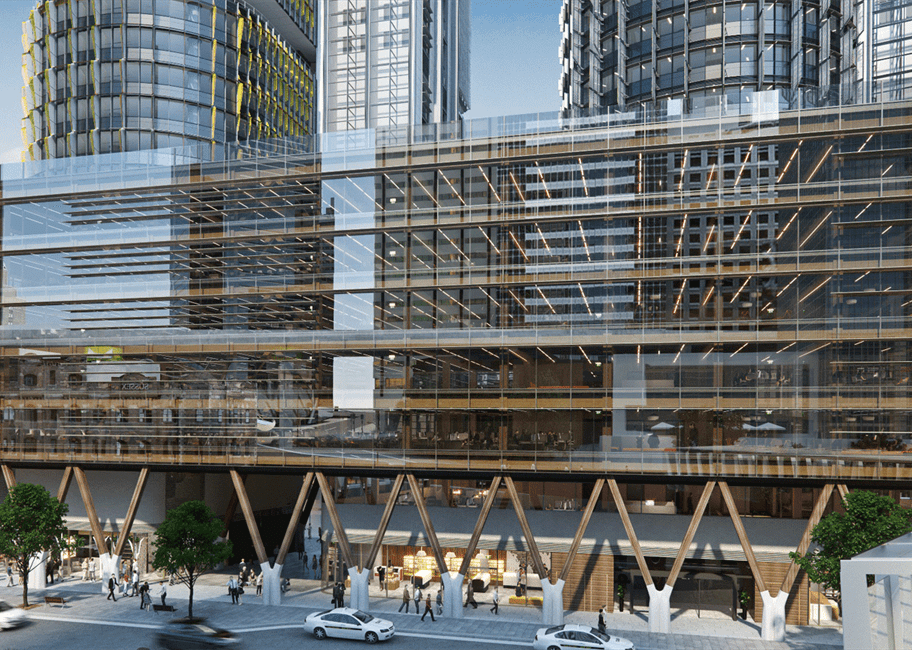
Seven storeys in height, International House is the world’s largest commercial office building constructed using mass-engineered timber as its primary structural material.
International House’s 3,500 cubic metres of sustainably grown and recycled timber acts as a ‘carbon sink’ while reducing the use of high-emissions concrete. Hardwood timber is used externally and softwood internally, above the ground level, making it a pleasant place to work.
7. Melbourne Quarter, Melbourne
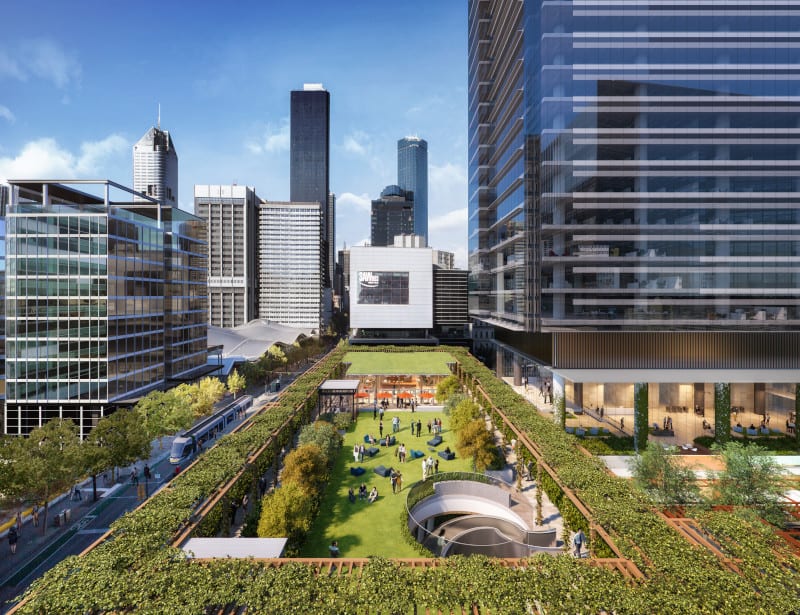
Melbourne Quarter in the heart of the CBD was completed in 2020 and is home to leading businesses, such as Energy Australia, Datacom and the Productivity Commission.
Builders managed to recycle as much as 90 per cent of all construction waste. The timber used in building and construction works was either reused or sourced from sustainable land and management practices.
Captured stormwater is recycled at Melbourne Quarter for irrigation throughout the precinct.
8. Pixel, Melbourne
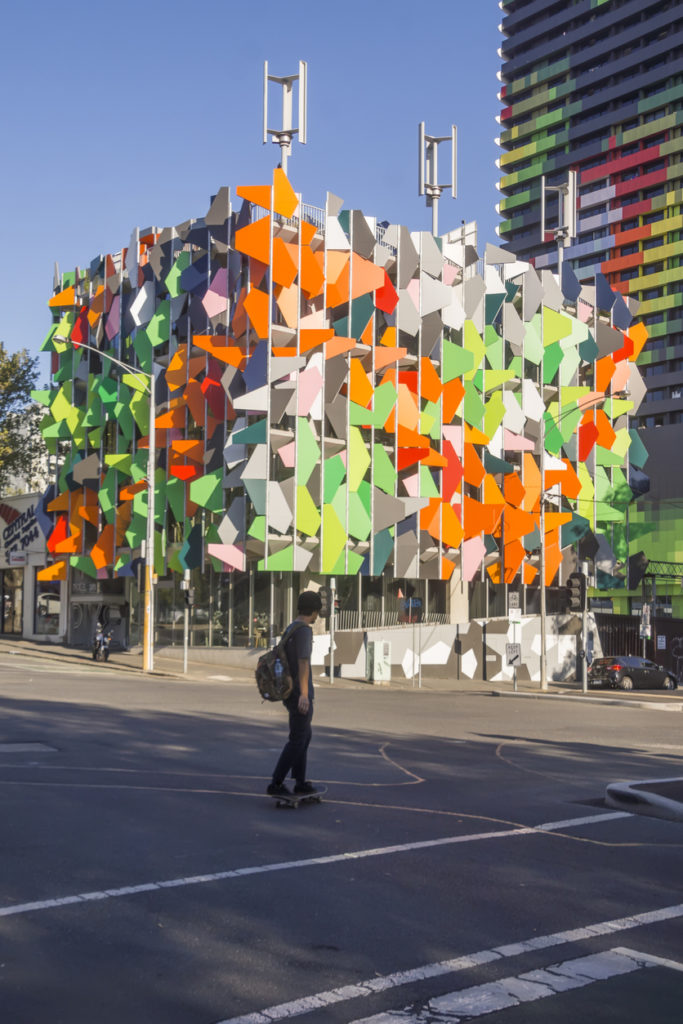
Another green building located on the site of a historic brewery is the aptly named Pixel Building.
“The greenest building I know is the Pixel building in the inner Melbourne suburb of Carlton. It incorporates a host of innovative new technologies and old ones, such as a green roof which we designed. It’s won a swag of sustainability and design awards,” says Williams.
Pixel’s rooftop is clad with fixed and tracking photovoltaic panels as well as vertical wind turbines. The building is designed to capture, filter and process rainwater via its green roof and water storage systems. An anaerobic digester also reduces waste from toilets. A specially designed concrete, Pixelcrete, contains half the embodied carbon conventional concrete has while maintaining the same structural properties.
9. Bio21 Institute Nancy Millis Building, Melbourne
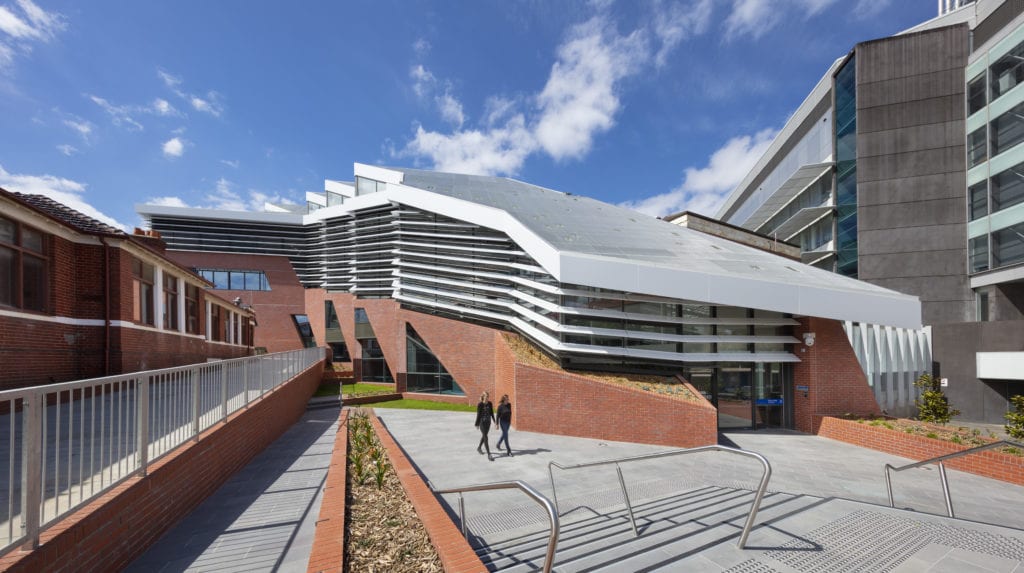
The four-storey, flexible lab-office building is one of the largest biotechnology research centres in Australia.
The biophilic design was important for the Melbourne University researchers. It features plenty of natural light, good airflow, views of the outdoors, and a series of timber planter boxes.
The building was awarded a Five Star Green Star rating from the Green Building Council of Australia.
10. 25 King Street, Brisbane
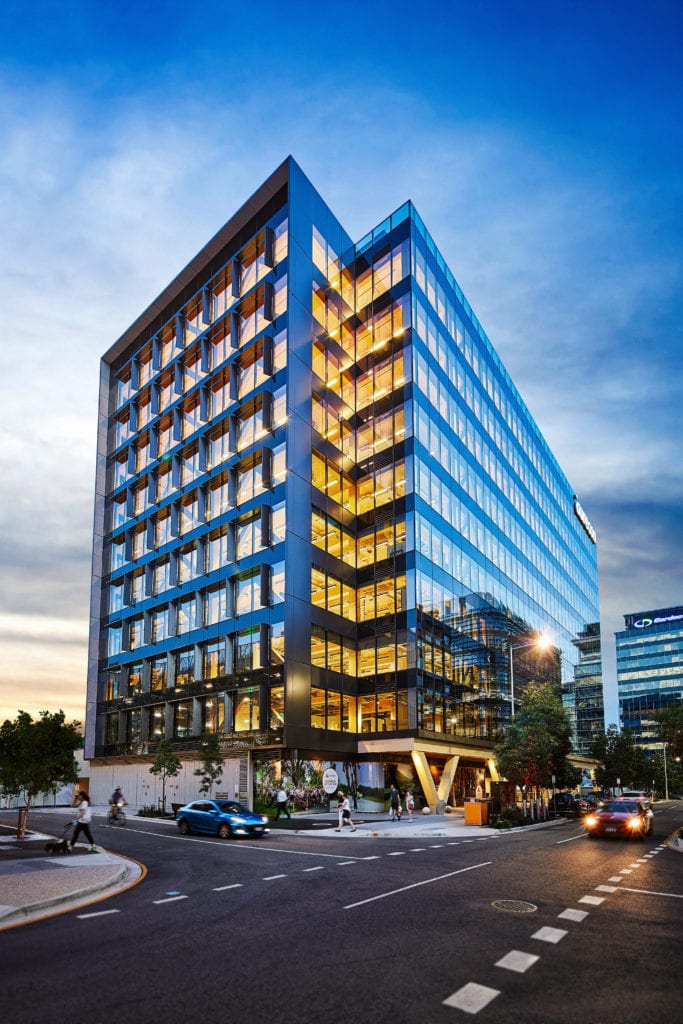
Australia’s Tallest Timber Tower, 25 King Street, was opened to Brisbane office workers in 2018.
The nine levels are constructed of recycled or glue-laminated timber structural beams and columns, with cross-laminated timber floors. Compared to traditional concrete-and-steel construction, the pre-formed engineered timber construction saved at least 40 per cent of energy.
Moving Forward
Getting closer to nature in the CBD is hard to imagine. However, that is the way our cities are heading. Green walls and rooftops, clean, filtered air, and high-rise timber buildings are increasing in number.
Businesses have started realising how beneficial green buildings are to the workers and for productivity. With growing interest, investment and technological advances, the environment is only going to benefit.
Leave a Reply